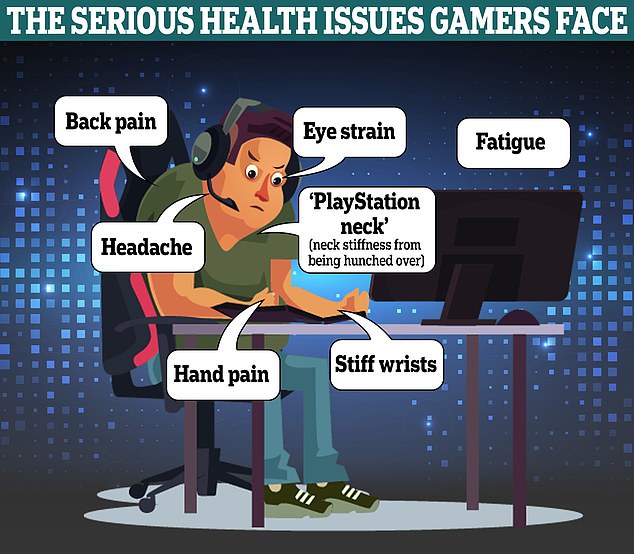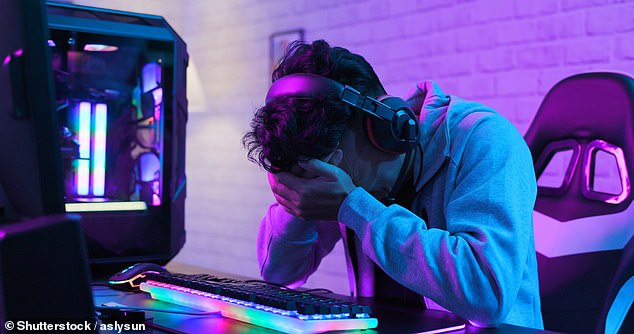The idea of spending three hours hunched over a gaming console may seem like a dream to many avid gamers.
But a new study may encourage you to stay away from the PlayStation.
Researchers at the University of Queensland have warned that while it can be fun, playing for too long can lead to serious health problems.
From eye strain to ‘PlayStation neck,’ experts say just three hours of gaming a day can wreak havoc on your body.
“The popularity of streaming games for hours is contributing to the increase in unnecessary physical exertion and pain,” said Janni Leung, lead author of the study.

Researchers at the University of Queensland have warned that while it can be fun, playing for too long can lead to serious health problems.
The UK is one of the largest markets in the world, with approximately 51.21 million players.
However, until now, little research has focused on the negative physical symptoms associated with long hours of video game play.
In their new study, the team set out to rectify this.
“A better understanding of the relationship between long hours of gaming and physical symptoms is essential to identify optimal levels of gaming and promote healthy gaming habits to minimize and prevent the development of physical health problems,” the team wrote in their study, published in Computers in human behavior.
Surveys were carried out on 955 players between 18 and 94 years old.
Participants were asked about how often they played video games, whether they planned to become professional gamers, and their levels of Internet gaming disorder.
They were also asked about any physical problems they had experienced as a result of the game.
The results revealed that people who played video games for three hours or more in one session were more likely to report negative physical symptoms.


The results revealed that people who played video games for three hours or more in one session were more likely to report negative physical symptoms.
This included eye strain (46.1 percent), hand pain or stiffness in the wrists (45.4 percent), and back pain or neck stiffness (52.1 percent), as well as fatigue and headaches. head.
Interestingly, the researchers found that the effects of playing for more than three hours per session were similar to those of more than six hours per session.
“This may suggest that the threshold for negative physical outcomes may be sufficiently met with 3 hours or more of continuous play,” the team said.
Participants who scored high on Internet gaming disorder were four times more likely to report physical problems.
And although the players are usually portrayed as young men, no gender differences were observed.
“The relationship between prolonged gaming and physical problems or pain applied to both younger and older people, although older people showed higher risks of hand or wrist pain,” the team explained.
“There was a trend for older age groups to be more likely to report specific physical symptoms compared to those aged 18 to 25, which could be explained by an increase in general physical symptoms with age.”
Based on the findings, the researchers urge gamers to take regular breaks during their gaming marathons.
“Players should take advantage of the ‘pause’ button and take regular breaks to avoid the build-up of chronic health problems,” Ms Leung concluded.
The study comes shortly after researchers created a grotesque model to show what gamers could look like in 20 years.
‘Michael’, the video game player of the future, has bloodshot eyes, a hunched back, a dented skull and blistered hands as a result of his gaming habit.
“From lack of sleep and dehydration to lack of vitamin D, digital eye strain and ‘PlayStation thumb’ are just some of the physical implications of spending hours online, in a gaming chair, away from light.” and physical activity,” said a spokesperson for OnlineCasino.ca, the Canadian site that conducted the study.
